Tahini sauce is a creamy condiment made from ground sesame seeds, typically thinned with oil and lemon juice to create a smooth, pourable consistency. This Middle Eastern staple has been used for thousands of years and serves as the foundation for dishes like hummus, baba ghanoush, and halva. Unlike nut butters, tahini is made from seeds, making it suitable for those with tree nut allergies (though sesame is its own allergen).
As a professional chef with 15 years of experience in Mediterranean cuisine, I've seen tahini transform from a regional specialty to a global pantry essential. This comprehensive guide covers everything you need to know about tahini sauce - from its ancient origins to modern culinary applications that go far beyond traditional Middle Eastern cooking.
Key facts about tahini: It contains approximately 8-10g of healthy fats per tablespoon, provides calcium and iron, and has a shelf life of 3-6 months when refrigerated properly. The ideal ratio for sauce preparation is 3 parts tahini paste to 1 part liquid (water, lemon juice, or vinegar).
Table of Contents
- What Exactly Is Tahini Sauce? Core Definition
- Historical Origins: From Ancient Egypt to Modern Kitchens
- Nutritional Profile and Health Benefits
- Step-by-Step Homemade Tahini Recipe (with Pro Tips)
- 12 Unexpected Ways to Use Tahini Sauce Daily
- Global Fusion Applications: How Chefs Use Tahini Worldwide
- Proper Storage and Troubleshooting Common Issues
- Tahini vs. Similar Products: Clearing Up Confusion
- Buying Guide: How to Select the Best Tahini
- Frequently Asked Questions (Answered by a Culinary Expert)
What Exactly Is Tahini Sauce? Core Definition
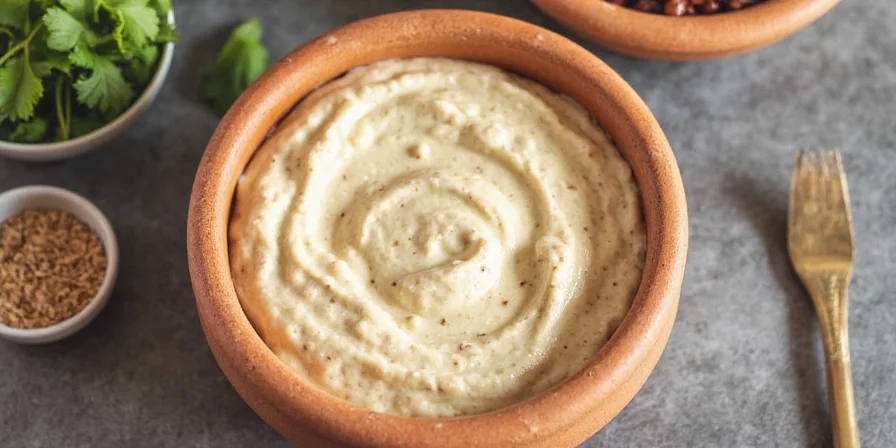
Tahini sauce refers to the prepared condiment made by thinning tahini paste (ground sesame seeds) with liquid ingredients. While "tahini" technically describes the paste itself, in Western contexts, "tahini sauce" commonly refers to the ready-to-use condiment.
Authentic tahini sauce contains just four essential components:
- Sesame seed paste (the base, made from hulled or unhulled seeds)
- Liquid component (water, lemon juice, or vinegar for acidity)
- Oil (additional sesame oil or neutral oil to achieve desired consistency)
- Salt (for flavor enhancement)
The ideal tahini sauce has a smooth, pourable consistency similar to heavy cream, with a nutty, slightly bitter flavor balanced by acidity. Unlike nut butters, tahini separates naturally as the oils rise to the top - this indicates authenticity rather than spoilage.
Historical Origins: From Ancient Egypt to Modern Kitchens
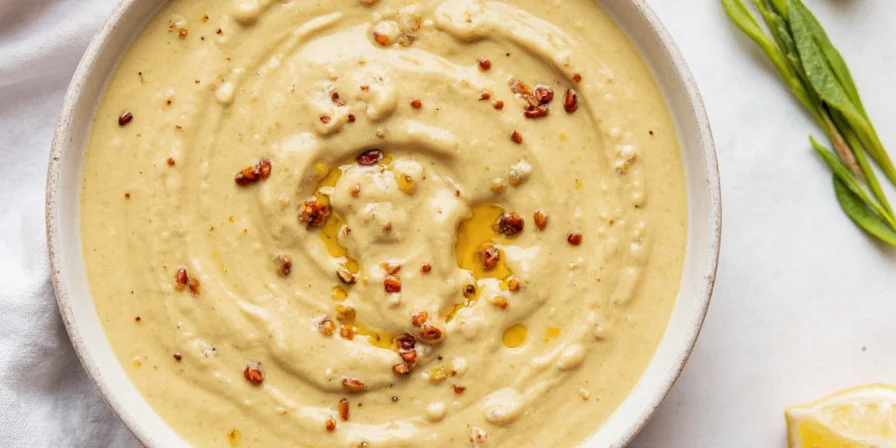
Archaeological evidence shows sesame cultivation dating back to 3500 BCE in the Indus Valley. Ancient Egyptians referenced sesame oil in medical texts from 1500 BCE, and the famous phrase "Open sesame!" from One Thousand and One Nights highlights its historical significance.
The word "tahini" comes from the Arabic root "taḥana," meaning "to grind." Traditional preparation involved stone grinding of hulled sesame seeds, a technique still used by artisanal producers today. By the 13th century, tahini had become a staple across the Ottoman Empire, featuring in cookbooks from Istanbul to Baghdad.
Modern commercial production began in the 1940s in Israel, with brands like Al Arz establishing international distribution by the 1970s. Today, tahini appears in 78% of American specialty grocery stores, up from just 12% in 2000, according to Specialty Food Association data.
Nutritional Profile and Health Benefits
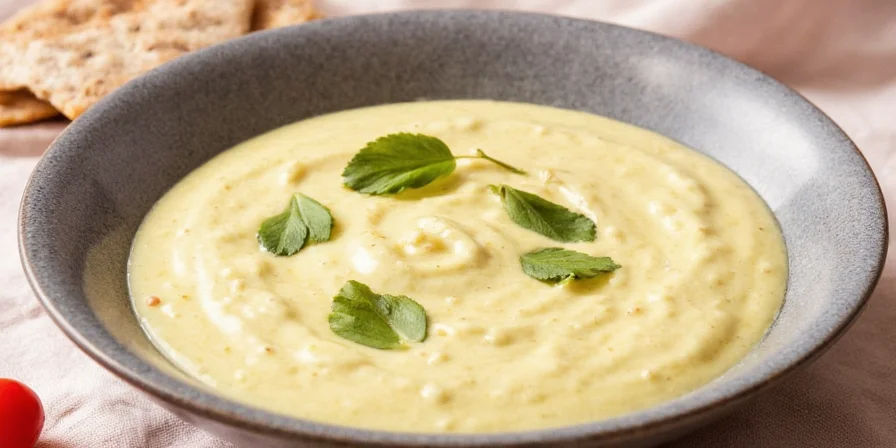
Per tablespoon (15g) of standard tahini paste:
| Nutrient | Amount | % Daily Value |
|---|---|---|
| Calories | 89 kcal | 4% |
| Total Fat | 8g | 10% |
| Saturated Fat | 1.1g | 6% |
| Calcium | 67mg | 5% |
| Iron | 1.3mg | 7% |
| Magnesium | 35mg | 8% |
| Fiber | 1.6g | 6% |
Key health benefits:
- Heart health: Rich in monounsaturated and polyunsaturated fats that support cardiovascular function
- Bone strength: Contains more calcium per serving than milk (ounce for ounce)
- Antioxidant properties: Sesame seeds contain sesamol and sesamin, potent antioxidants
- Digestive health: Provides dietary fiber that supports gut microbiome balance
Allergy note: The FDA classifies sesame as a major food allergen as of 2023. Approximately 0.2% of the US population has sesame allergy, making it the ninth most common food allergy.
Step-by-Step Homemade Tahini Recipe (with Pro Tips)

Store-bought tahini often contains additives. This professional method yields restaurant-quality results:
Perfect Tahini Sauce Recipe
- Yield: 1 cup sauce
- Prep time: 10 minutes
- Equipment: High-speed blender or food processor
Ingredients:
- 1 cup lightly toasted sesame seeds (hulled for lighter color)
- 1/4 cup high-quality sesame oil (or avocado oil)
- 3 tablespoons fresh lemon juice
- 1/4 teaspoon sea salt
- 2-4 tablespoons ice water (added gradually)
Professional Method:
- Toast seeds properly: Heat sesame seeds in dry skillet over medium-low heat for 3-5 minutes until golden and fragrant. Cool completely (warm seeds cause separation).
- Initial grind: Process cooled seeds alone for 2 minutes until they form a thick paste (scrape down sides frequently).
- Add oil gradually: With machine running, slowly drizzle in oil until fully incorporated.
- Incorporate liquid: Add lemon juice and salt, then slowly add ice water 1 tablespoon at a time until desired consistency.
- Rest and recheck: Let sit for 15 minutes, then reprocess if needed for silkier texture.
Pro chef tip: For emulsion stability, add liquid ingredients at ice-cold temperature. The temperature shock helps bind the oil and water components.
12 Unexpected Ways to Use Tahini Sauce Daily

Beyond hummus and falafel, tahini shines in these innovative applications:
- Breakfast boost: Swirl into oatmeal with banana and cinnamon (replaces butter)
- Creamy pasta sauce: Blend with roasted garlic and vegetable broth for vegan Alfredo
- Marinade base: Combine with harissa and olive oil for lamb or chicken
- Salad dressing foundation: Whisk with apple cider vinegar and maple syrup
- Baking ingredient: Substitute for oil in brownies (use 3/4 cup tahini for 1 cup oil)
- Smoothie thickener: Adds creaminess without dairy (1 tbsp per serving)
- Soup enhancer: Stir into lentil or tomato soup for richness
- Dip for fresh fruit: Try with apple slices or pears (add a pinch of cardamom)
- Grain bowl dressing: Thin with rice vinegar for Asian-inspired bowls
- Breakfast sandwich spread: On bagels with sprouts and tomato
- Dessert component: Swirl into brownie batter or use in halva-inspired parfaits
- Coating for roasted nuts: Toss with pecans and roast for gourmet snack
Global Fusion Applications: How Chefs Use Tahini Worldwide

Top chefs globally leverage tahini's unique properties:
- Mexico: Chef Enrique Olvera (Pujol) uses tahini in mole verde for nutty depth without overwhelming heat
- Japan: Tokyo ramen shops incorporate tahini into tonkotsu broth for silkier texture (1 tsp per quart)
- Peru: Lima ceviche bars use tahini as emulsifier in leche de tigre marinade
- France: Parisian patisseries blend tahini with dark chocolate for ganache (ratio: 1:3)
- USA: Southern chefs substitute tahini for buttermilk in fried chicken marinade (½ cup tahini + ½ cup water)
Why tahini works in fusion cooking: Its high lignan content acts as natural emulsifier, while the sesamol provides subtle bitterness that balances sweetness. Professional chefs typically use a 3:1 ratio of tahini to acidic component when adapting recipes.
Proper Storage and Troubleshooting Common Issues

Storage Guidelines:
- Unopened: Store in cool, dark place for 12-18 months
- Opened: Refrigerate in airtight container for 3-6 months
- Homemade: Use within 3 weeks (freeze portions for longer storage)
Troubleshooting Common Problems:
| Issue | Causes | Professional Solution |
|---|---|---|
| Too thick/separated | Natural oil separation | Whisk vigorously with 1 tsp warm water per ¼ cup tahini |
| Bitter aftertaste | Over-toasted seeds or rancid oil | Add pinch of sugar and extra lemon juice to balance |
| Grainy texture | Insufficient processing time | Process 2-3 minutes longer with additional oil |
| Mold growth | Moisture contamination | Discard immediately - don't attempt to salvage |
Pro tip: When measuring tahini, lightly coat your measuring spoon with neutral oil first to prevent sticking.
Tahini vs. Similar Products: Clearing Up Confusion
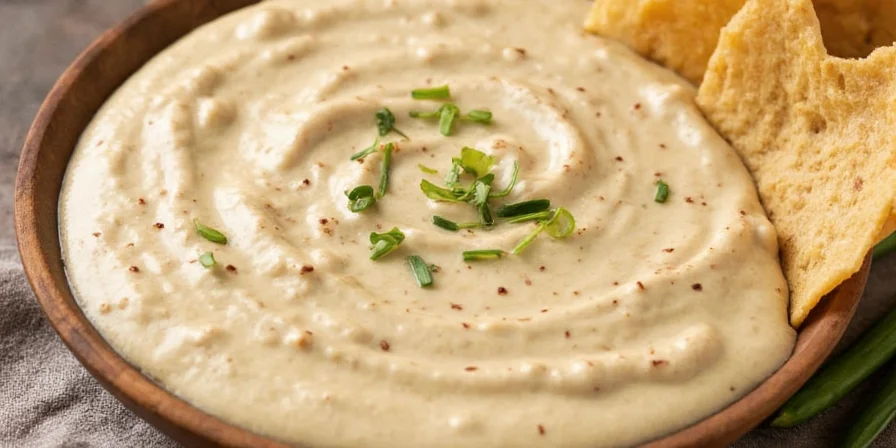
| Product | Key Differences | Best Uses | Substitution Ratio |
|---|---|---|---|
| Tahini (Middle Eastern style) | Made from hulled sesame seeds, lighter color, milder flavor | Hummus, salad dressings, sauces | 1:1 for recipes calling for tahini |
| Sesame paste (Asian style) | Unhulled seeds, darker, stronger flavor, often roasted | Chinese dishes, noodle sauces, dipping sauces | Use ¾ amount + extra liquid |
| Peanut butter | Sweeter, higher sugar content, different fat profile | Sandwiches, baking, satay sauce | Not ideal substitution |
| Almond butter | Milder flavor, higher cost, different texture | Smoothies, toast, baking | 1:1 but expect flavor differences |
| Black sesame paste | Distinctive black color, stronger nutty flavor | Desserts, Chinese cuisine, visual contrast | Use ½ amount for similar flavor intensity |
Key clarification: Despite common confusion, tahini and sesame paste are different products. Tahini (used in Middle Eastern cuisine) is typically made from hulled, lightly toasted seeds and has a smooth, pourable consistency. Asian sesame paste often uses unhulled, more thoroughly roasted seeds and has a thicker, stickier texture.
Buying Guide: How to Select the Best Tahini

What to Look For on the Label:
- Ingredient list: Should contain ONLY sesame seeds (and possibly salt)
- Color: Light beige to pale brown (dark color suggests over-roasting)
- Consistency: Should pour slowly like honey (thick but not solid)
- Origin: Look for brands from Lebanon, Israel, or Turkey for authentic quality
- Certifications: Organic, non-GMO, and kosher certifications add value
Top Recommended Brands:
- Premium: Soom Foods (USA), Al Arz (Lebanon)
- Mid-range: Joyva (USA), Tribe (USA)
- Budget: Cortas (Lebanon), 365 Whole Foods Market
Pro buying tip: Shake the container before purchasing - you should hear liquid movement. Solid containers indicate poor quality or expired product.
Frequently Asked Questions (Answered by a Culinary Expert)
Is tahini the same as sesame paste?
No. Tahini (Middle Eastern style) is made from hulled sesame seeds and has a lighter color and milder flavor. Asian sesame paste typically uses unhulled seeds, is darker, and has a stronger, more roasted flavor. They're not directly interchangeable in recipes.
Why does my tahini sauce taste bitter?
Bitterness usually comes from over-toasted sesame seeds or rancid oil. To fix: whisk in a pinch of sugar and additional lemon juice (1/4 tsp per ¼ cup tahini). For prevention, use fresh, high-quality ingredients and don't over-toast seeds.
Can tahini go bad, and how can I tell?
Yes, tahini can spoil. Signs include: darkening color, sour or chemical-like smell, mold growth, or extremely thick texture that won't loosen with stirring. Properly stored opened tahini lasts 3-6 months refrigerated. Always check the "best by" date.
Is tahini vegan and gluten-free?
Yes, pure tahini made only from sesame seeds is naturally vegan and gluten-free. However, always check labels for potential cross-contamination if processed in facilities handling gluten or other allergens, especially given sesame's status as a major allergen.
How can I make tahini sauce without a food processor?
While challenging, you can make small batches using a mortar and pestle: Toast seeds, cool completely, then grind with small amounts of oil. It requires significant effort - approximately 15-20 minutes of continuous grinding. Alternatively, purchase pre-made tahini paste and thin it with liquid ingredients.

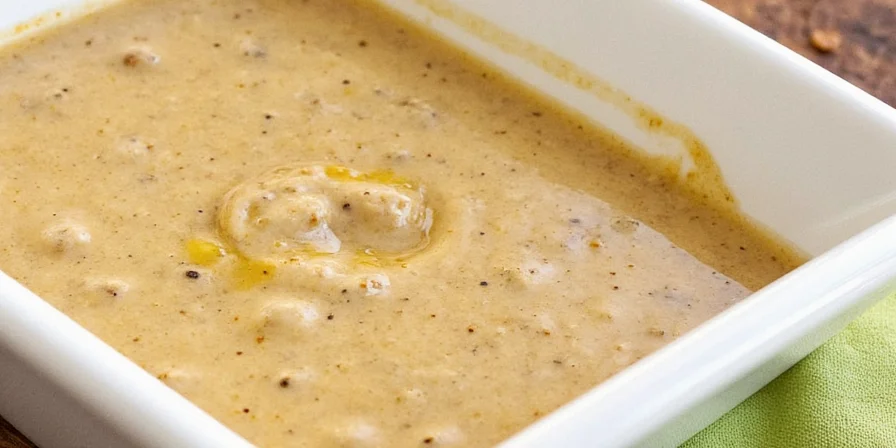









 浙公网安备
33010002000092号
浙公网安备
33010002000092号 浙B2-20120091-4
浙B2-20120091-4